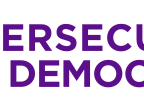Past posts from Online Political Transparency Project
We are now Cybersecurity for Democracy
Before 2021, our project was known as Online Political Transparency Project. Here are links to posts from our former site on Medium.
Publishing Facebook ad data (redux), by Laura Edelson, published November 13, 2020.
“Independently collected data about Facebook ads — and how they’re targeted to individuals — is finally available again. We’re publicly releasing the data collected by Ad Observer so journalists, researchers, and watchdogs can study it. We also make portions of this data available in visualizations on Ad Observatory, our public website showing trends in Facebook political advertising in the 2020 elections…”
What it’s like to actually use Facebook’s ad transparency tools, by Paul Duke, published October 30, 2020.
“Facebook has provided a bunch of pieces that it claims solve the transparency puzzle, but those pieces still have to be assembled, and maintained–because nothing in tech just works indefinitely–and there’s no guarantee all the pieces are available….”
Reporting Recipe: How is your audience targeted by political ads? by Jeremy Merrill, published October 26, 2020.
“This reporting recipe will show you a new way to report on how this data is being used to determine which ads members of your audience see — and which ads they don’t…”
Audit of Facebook ad transparency finds missed political ads, by Laura Edelson, published October 22, 2020.
“After the attempts at election interference made via Facebook’s ad platform in 2016, Facebook fought off regulation by promising to bring transparency to political ads. Facebook said it would make public who is paying for political ads, along with basic facts such as how much they cost and dates they run. But our cybersecurity analysis shows vulnerability in Facebook’s transparency algorithms that reveals they routinely miss including political ads in its public archive…”
Facebook’s political ad spending numbers don’t add up, by Laura Edelson, published October 12, 2020.
“Facebook recently earned plaudits–from us and others–with an announcement that it would widen a ban on political ads after Election Day. Facebook is used by 7 in 10 U.S. adults, so their efforts to cut down on online misinformation in what may be a contested election are to be commended. However, we have found a critical flaw in one of their tools to combat misinformation, and Facebook has chosen not to fix it…”
